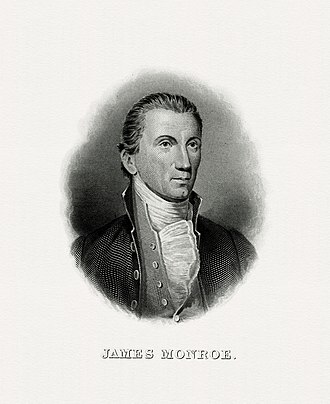BEP engraved portrait of Monroe as president. | |
| Date | March 4, 1817 |
|---|---|
| Location | Washington, D.C. Old Brick Capitol |
| Participants | James Monroe 5th president of the United States — Assuming office John Marshall Chief Justice of the United States — Administering oath Daniel D. Tompkins 6th vice president of the United States — Assuming office John Gaillard President pro tempore of the United States Senate — Administering oath |
The first inauguration of James Monroe as president of the United States was held on Tuesday, March 4, 1817, in front of the Old Brick Capitol, where the Supreme Court building now stands. The inauguration marked the commencement of the first four-year term of James Monroe as president and Daniel D. Tompkins as vice president. The Chief Justice, John Marshall administered the oath of office. [1]
